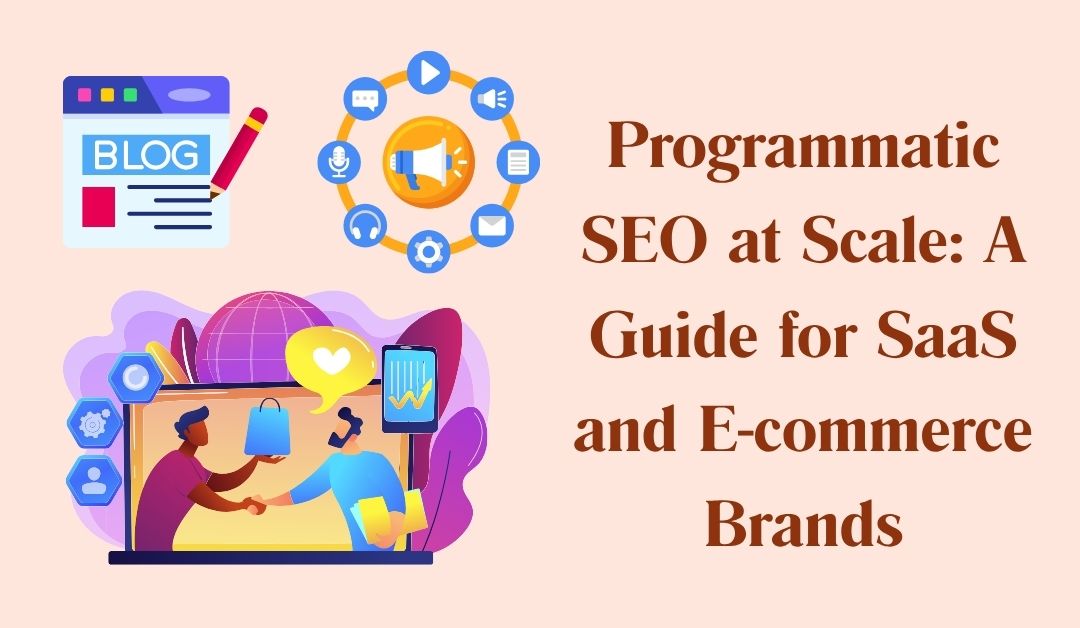Introduction
Growing organic traffic can feel like climbing a mountain—the higher you go, the more effort it takes. Programmatic SEO offers a way to build many pages automatically, targeting hundreds or thousands of keywords with minimal manual work. In this guide, we’ll explore what programmatic SEO is, why it’s especially powerful for SaaS and e-commerce brands, and how to do it right without overwhelming your team. Whether you’re already using digital marketing services in Chennai or handling SEO in-house, you’ll find clear steps to get started.
Understanding Programmatic SEO
Programmatic SEO refers to generating large numbers of web pages or pieces of content using templates and structured data. Instead of writing each page by hand, you create a framework where content elements (like product names, features, locations, or FAQs) fill into predefined slots. This approach scales rapidly: a single template can produce hundreds or even thousands of pages.
Key components include:
- Structured Data Sources: Databases or spreadsheets that list all the variables (e.g., software names, feature lists, destination cities).
- Page Templates: Predefined HTML or CMS templates that pull in those variables.
- Automation Tools: Scripts or platforms that combine data with templates to generate SEO-ready pages.
By automating repetitive tasks, programmatic SEO frees up writers to focus on high-value content and strategy.
Why SaaS Brands Should Care
SaaS companies often have complex feature sets, integrations, and use cases. Traditional SEO can struggle to cover every permutation manually. Programmatic SEO allows you to:
- Target Long-Tail Queries: Automatically create pages for “best CRM for small nonprofits,” “email marketing tools for e-commerce teams,” and dozens more without writing each page from scratch.
- Showcase Integrations: If your software integrates with 30 other platforms, you can spin up 30 dedicated pages like “X Software + Y Integration,” driving targeted traffic.
- Localized Content: Quickly generate pages such as “X Software in Berlin,” “X Software pricing in Tokyo,” or “X Software trial UK,” making your product visible in different markets.
This method not only expands your keyword footprint but also improves user experience by presenting highly relevant pages.
Implementing Programmatic SEO for SaaS Brands
- Audit Your Data: List all variables you can use—features, integrations, industries, regions, pricing tiers. Ensure your database is clean and well-organized.
- Design Effective Templates: Create templates that include an SEO-friendly title tag, a clear H1 headline, meta description slots, and body copy areas. Leave placeholders for data points like “[Integration Name]” or “[Industry].”
- Write Core Content Blocks: Draft evergreen intro, outro, and FAQ sections that can be reused. Keep these blocks generic enough to work across many pages but specific enough to engage users.
- Automate Generation: Use a scripting language (Python, Node.js) or a no-code tool (e.g., Airtable + Zapier + Webflow) to merge your data with templates and publish pages automatically.
- Monitor and QA: Before going live, spot-check generated pages for broken links, duplicate content, or awkward phrasing. A sample of 20–30 pages usually reveals most issues.
Scaling Programmatic SEO for E-commerce
E-commerce brands face similar scaling challenges—with thousands of products, variants, or categories to cover. Programmatic SEO helps you:
- Variant Pages: Generate pages for each color, size, or model of a product (e.g., “Running Shoes in Blue Size 10”).
- Category Filters: Create filter pages like “Women’s Jackets Under $100” or “4K TVs with HDR.”
- Location-Based Pages: If you ship internationally or have brick-and-mortar stores, produce pages targeting local searches (“Electronics Near Me in Chicago”).
By automating these pages, you tap into countless search queries without writing each description manually. This not only boosts visibility but also caters to specific user intents—leading to higher conversion rates.
Best Practices and Tools
- Avoid Thin Content: Even though pages are generated, ensure each one has at least 300 words of unique or semi-unique content. Combine template text with dynamic data and personalized elements.
- Canonical Tags: Use canonical URLs to signal to search engines which version of similar pages is primary, preventing duplicate-content issues.
- Dynamic XML Sitemaps: Automate sitemap updates so search engines can discover new pages quickly.
- Monitoring Tools: Tools like Google Search Console, Screaming Frog, and Ahrefs Alerts can help you spot indexing issues, unexpected drops in traffic, or crawl errors.
- User Experience: Maintain consistent navigation, breadcrumbs, and internal linking so visitors can easily explore related pages.
Measuring Success and Continuous Optimization
- Track Indexation: Check how many programmatic pages are indexed versus how many you’ve generated.
- Monitor Traffic and Conversions: Use Google Analytics or your analytics platform to compare traffic, bounce rates, and goal completions from programmatic pages against manually created ones.
- A/B Testing Templates: Try different headlines, meta descriptions, or core content blocks to see which variations drive higher click-through rates and engagement.
- Update Data Regularly: If your structured data changes (new product variants, pricing updates), ensure your templates reflect these updates automatically.
Continuous monitoring and refinement ensure that programmatic pages remain relevant, valuable, and high-ranking over time.
Conclusion
Leveraging programmatic SEO at scale empowers SaaS and e-commerce brands to cover vast keyword opportunities while maintaining efficiency. By combining clean data, smart templates, and automated workflows, you can rapidly expand your organic presence and drive targeted traffic. If you’re looking to boost your digital footprint and streamline your SEO efforts, consider tapping into specialized SEO services in Chennai to set up robust programmatic systems tailored to your business needs.
